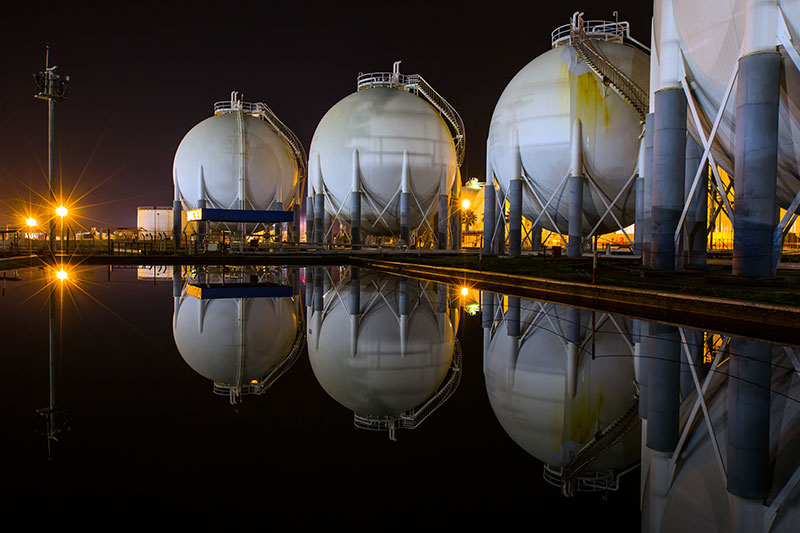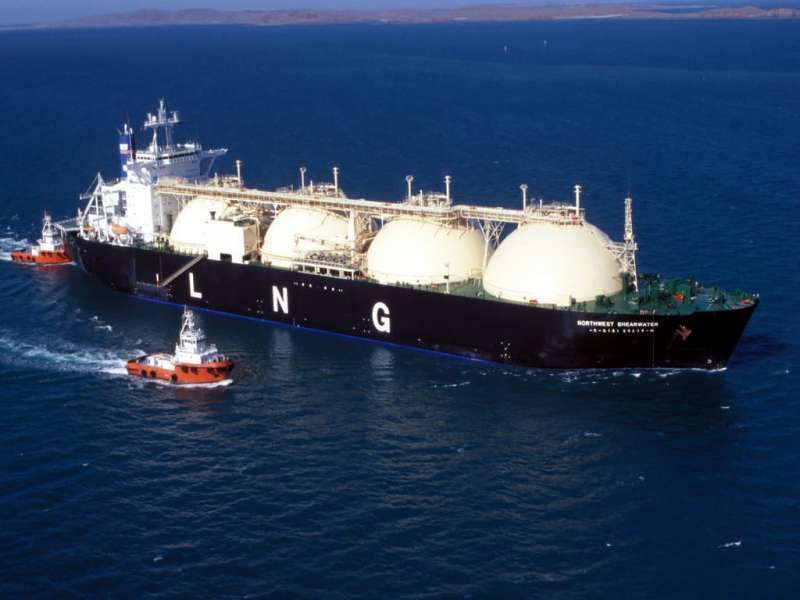LNG & LPG SUPPLIER
Liquefied natural gas or LNG is natural gas (predominantly methane, CH4) that has been converted temporarily to liquid form for ease of storage or transport.
Natural gas is composed primarily of methane, with varying elements of ethane, propane, butane and the progressively heavier hydrocarbons.
Small quantities of nitrogen, oxygen, carbon dioxide, sulphur compounds and water may also be found.
Liquefied natural gas takes up about 1/600th the volume of natural gas in the gaseous state.
It is odorless, colorless, non-toxic and non-corrosive. Hazards include flammability, freezing and asphyxia.
Transforming natural gas into LNG is a complicated process.
The gas is first extracted and transported to a processing plant where it is purified by removing any condensates such as water, oil, mud, as well as other gases like CO2 and H2S and some times solids as mercury.
The gas is then cooled down in stages until it is liquefied. LNG is finally stored in storage tanks and can be loaded and shipped.
The liquefaction process involves removal of certain components, such as dust, acid gases, helium, water, and heavy hydrocarbons, which could cause difficulty downstream.
The natural gas is then condensed into a liquid at close to atmospheric pressure (maximum transport pressure set at around 25 kPa/3.6 psi) by cooling it to approximately −162 °C (−260 °F).
In simple terms natural gas that comes to the liquefaction plant from a production source is treated to remove impurities before being cooled to a temperature of -161°C.
The reduction in volume makes it much more cost efficient to transport over long distances where pipelines do not exist.
Where moving natural gas by pipelines is not possible or economical, it can be transported by specially designed cryogenic sea vessels (LNG carriers) or cryogenic road tankers.

MOT’s terminal infrastructure for LNG includes specialized storage tanks and loading facilities designed to handle the extreme cold temperatures required to maintain LNG in its liquid state. Rigorous safety protocols ensure the secure storage and distribution of LNG, minimizing environmental impact and maximizing operational efficiency.
Liquefied Petroleum Gas (LPG): LPG, also known as propane or butane, is a mixture of hydrocarbon gases stored under pressure as a liquid. It is derived from natural gas processing and petroleum refining and is commonly used as a fuel for heating appliances, cooking, and as an automotive fuel in areas where natural gas infrastructure is limited.
MOT’s capabilities in handling LPG involve dedicated storage facilities equipped with safety features such as pressure relief valves and leak detection systems. These measures ensure the safe storage and distribution of LPG, meeting stringent regulatory standards and customer requirements for reliability and safety.

Liquefied Petroleum Gas (LPG)
Liquefied petroleum gas (LPG), also called LPG or LP Gas, actually encompases 2 main gases – propane (C3) or butane (C4) are flammable mixture of hydrocarbon gases used as a fuel in heating appliances and vehicles.
It is a clean-burning fossil fuel that can be used to power internal combustion engines. At normal temperature and pressure it is a gas but in a vessel under modest pressure it becomes a liquid. Varieties of LPG bought and sold include mixes that are primarily Propane or mixes that are primarily Butane.
LPG evaporates at normal temperatures and pressures. LPG is heavier than air and thus tends to settle in low spots, such as basements. This can cause ignition or suffocation hazards if not dealt with.
LPG-fueled vehicles can produce significantly lower amounts of some harmful emissions and the greenhouse gas carbon dioxide (CO2). The international standard is EN 589.
LPG is usually less expensive than gasoline, it can be used without degrading vehicle performance, and most LPG used in U.S. comes from domestic sources. In Australia, LPG (Propane) is virtually supplied to all homes and businesses.
LPG is supplied in gas bottles that are either exchanged or refilled on site by gas tankers. LPG (Butane) is supplied to specific businesses whereby it has advantage over Propane. These applications are normally related to greenhouse and use as propellant in aerosols.
The chemical formula for butane is C4H10. There is another mix -(Propane/Butane) called Autogas. This is the same LPG gas sold at petrol stations. Autogas LPG run vehicles and especially public bus and many private car owners have economic value as LPG cost is cheaper than petrol or diesel.
Another advantage is lower greenhouse gas emissions as compared with petrol or diesel. However the availability of LPG-fueled light-duty passenger vehicles is currently limited. A few light-duty vehicles—mostly larger trucks and vans—can be ordered from a dealer with a prep-ready engine package and converted to use propane.
Existing conventional vehicles can also be converted for LPG use. Since propane is stored as a liquid in pressurized fuel tanks rated to 300 psi, LPG conversions consist of installing a separate fuel system if the vehicle will run on both conventional fuel and LPG or a replacement fuel system for LPG-only operation.
